I plan to serve a lot of cevapcici this summer (now that I can pronounce it), hot off the barbecue grill, maybe with a yogurt cucumber dip? If you’re in the neighborhood, stop by and give them a try.

where the image is meant to titillate and inspire the cook

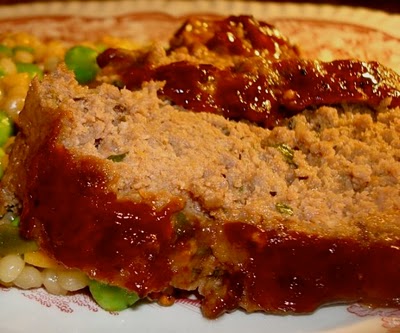
Moist is a key word when it comes to delicious meatloaf.
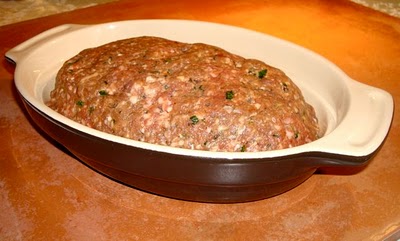
Isn’t this a cute little meatloaf? Baked in my Le Creuset Chestnut Oval Baker.
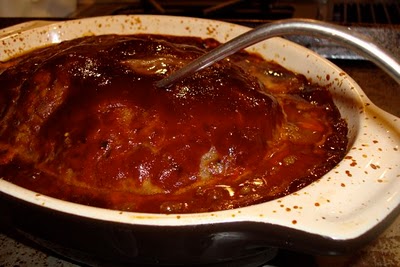
Really good meatloaf recipes are a dime a dozen… No, actually, they are cheaper than that, they’re free! You can ask your mom, my mom, your cousin, your best friend, your co-worker, Molly, my butcher, Google, Foodbuzz (click here)…or me.
But this post is about my secrets to a scrumptious meatloaf: Cook at 325 until the meat registers 155 degrees as opposed to a specific cooking time. Use a remote thermometer. Remove from oven and let rest before serving. This results in a moist juicy meatloaf.
And have a gooey zippy sauce. This one is 4 parts barbecue sauce to one part each honey and Worcestershire plus several hearty dashes of hot sauce. Whisk together and pour over the meat prior to cooking.
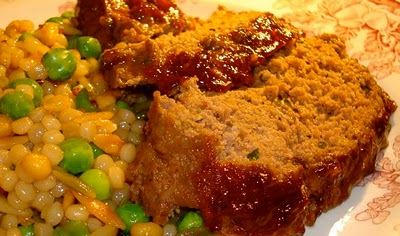
Peas are optional.
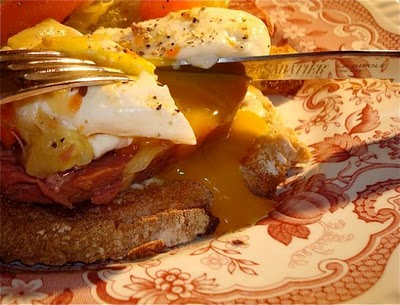
I prepare a traditional corned beef and cabbage – simmering the corned brisket in liquid with pickling spices, bay, peppercorns and carrot, onion, and celery for about four hours. Then I remove the beef, add quartered cabbage and potatoes, and cook until tender.
For this brunch dish, eggs are poached in the corned beef cooking liquid. This gives the eggs an extraordinary flavor.
I mix mayonnaise and creme fraiche with whole grain mustard and horseradish and spread this on toasted rye bread. Top the rye with sliced corned beef, then the poached egg, along side a helping of potatoes and cabbage.
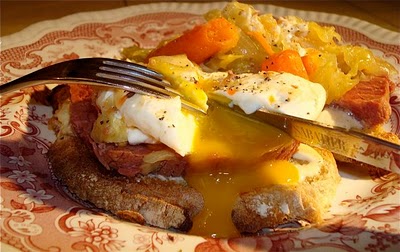
This photo is my submission to CLICK, a theme-based monthly food photography event. The theme this month is “metal.” This food photograph features my French SABATIER knife with fork.

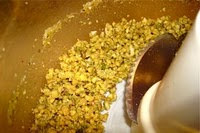
Pistachios and panko bread crumbs are ground in the food processor with salt, pepper, and olive oil to get the right consistency for encrusting the meat.
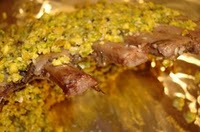
The lamb rack is seasoned then encrusted and baked at 350 for about 25 – 30 minutes. This lamb is cooked to medium, adjust cooking time to your temperature preference, then let the lamb rest.
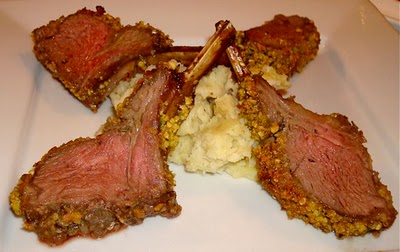
The chops are sliced and served here with mashed potatoes. Drizzle the tangy warm pomegranate glaze over the meat.
Emperor Vitellius brought the pistachio to Rome in A.D. 50. He would finish off his meal by stuffing his mouth full of pistachios. Pistachios are currently cultivated as a commercial crop Italy.

Grazie Molto! Thanks for inviting me 🙂